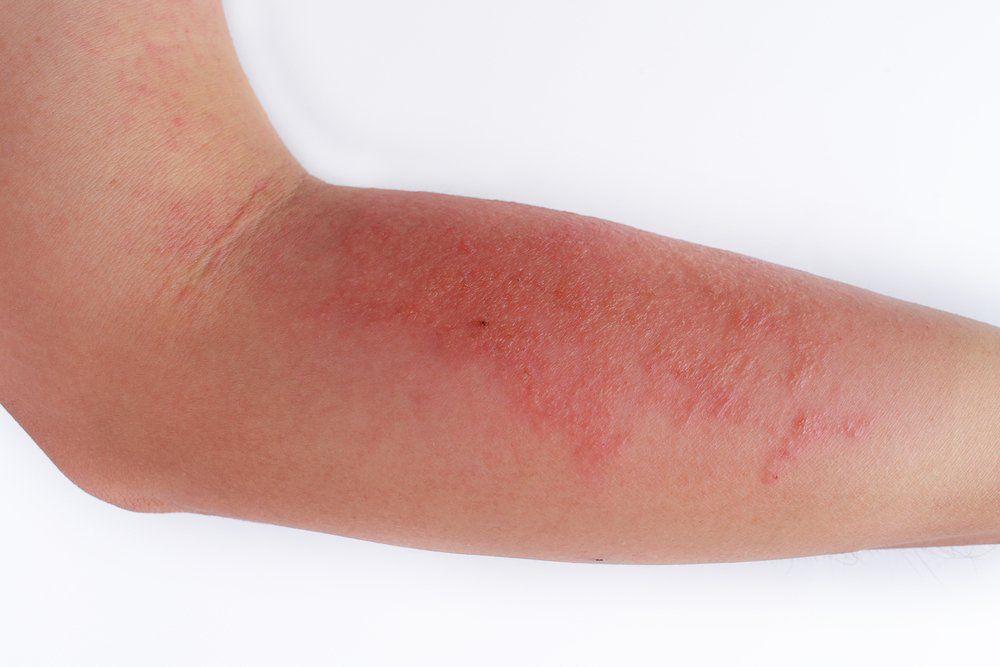- Case-Based Roundtable
- General Dermatology
- Eczema
- Chronic Hand Eczema
- Alopecia
- Aesthetics
- Vitiligo
- COVID-19
- Actinic Keratosis
- Precision Medicine and Biologics
- Rare Disease
- Wound Care
- Rosacea
- Psoriasis
- Psoriatic Arthritis
- Atopic Dermatitis
- Melasma
- NP and PA
- Skin Cancer
- Hidradenitis Suppurativa
- Drug Watch
- Pigmentary Disorders
- Acne
- Pediatric Dermatology
- Practice Management
- Prurigo Nodularis
- Buy-and-Bill
Publication
Article
Dermatology Times
Topical botanicals prove effective for pediatric atopic dermatitis
Author(s):
A novel cocktail of topically applied botanicals has recently proven useful in the treatment and management of mild-to-moderate atopic dermatitis in children, offering hope for this patient population.

Dr. Kircik

A recent study1 showed a clever combination of topical botanicals to be very effective in the improvement of mild-to-moderate symptoms of atopic dermatitis (AD) in children. According to a one expert, such effective topical preparations containing natural agents are very much needed in the treatment and management regimens for AD and many other chronic inflammatory dermatoses.
RELATED: Tape strips may replace biopsies in pediatric atopic dermatitis
“Botanicals are not new and have been used for thousands of years in traditional Chinese and Indian medicine. However, what’s new is that the botanicals are now being evaluated in a more scientific fashion,” says Leon H. Kircik, M.D., Icahn School of Medicine at Mount Sinai, New York, and co-author of the study.
Dr. Kircik and fellow colleagues conducted a study to determine the efficacy of a novel botanical combination incorporated in the Kamedis Eczema Therapy Cream (Kamedis, Inc.) (the test product) for children and adults with mild-to-moderate symptoms of AD. The multicenter randomized, blinded, one month-long clinical study included children subjects who were a subpopulation of a 108 combined population of adults and children randomly divided into three treatment groups: test product, vehicle, and comparator. A total of 39 children subjects (female: n=24; male: n=15; age range 3 to 18 years) with uncomplicated, stable, mild-to-moderate AD were included in the study. The vehicle used was the identical test product without the botanical combination, while the comparator was a leading over-the-counter brand moisturizer in the US market. All three treatment groups used the same Kamedis body wash followed by one of the three randomized treatment creams for the affected areas. Multiple parameters were assessed including improvements in pruritus, as well as the Investigator Global Assessment (IGA), extent of affected Body Surface Area (BSA), as well as SCORAD and EASI indexes.
Compared to vehicle, results showed the test product achieved superior outcomes in all evaluated clinical parameters. The results revealed that 40% of subjects achieved 0 (clear) on IGA scale and 60% achieved 0 or 1 (clear or almost clear) on IGA scale compared to 8% or 38% of vehicle subjects, respectively. The BSA comparative outcomes as well as the SCORAD and EASI indexes also showed advantage of the test product over the vehicle.
In mild-to-moderate cases of AD, treatment is focused on reducing the exposure to triggering factors with simultaneous topical application of emollients and steroid-free barrier creams, as well as topical corticosteroids. More severe cases are treated with systemic corticosteroids, immunosuppressive agents such as methotrexate, cyclosporine or azathioprine and, recently, with novel biologics. According to Dr. Kircik, the associated potential side effects are one of the limiting factors for using these systemic agents in the long-term, particularly in young children.
“Though topical therapies such as corticosteroids and calcineurin inhibitors are effective and readily used for chronic dermatoses such as atopic dermatitis, these would be better reserved to quell the flares of the disease. Topical botanicals could be used as an adjunctive therapy to help reach and maintain disease clearance,” Dr. Kircik says.
READ MORE: New resource for teens with atopic dermatitis
Kamedis Eczema Therapy Cream is a non-steroidal homeopathic emulsion based on botanicals, specially formulated to manage the symptoms of a number of dermatoses such as AD and many of its varying forms, radiation dermatitis, as well as burns. The 6 specially chosen botanicals in the formulation include Rheum palmatum, Sanguisobra officinalis, Ailanthus altissima, Scutellaria baicalensis, Cnidium monnieri, and Glycyrrhiza glabra – all of which are known to have significant anti-inflammatory and potential antimicrobial effects that can ameliorate the symptoms of AD.
“The combination of the six botanicals in this product is what sets it apart from other currently available botanical-based creams. The test product is uniquely extracted from these six botanicals and it’s their combination as well as their specific ratios that make it work in AD,” Dr. Kircik says.
Using a complimentary full skin care regimen in AD patients is recommended Dr. Kircik says, not only to treat flares but also to maintain the remission results achieved.
“Atopic dermatitis is a chronic inflammatory condition for which we have no cure, and we are always in search of better treatments for our patients,” adds Dr. Kircik. “Using a treatment regimen with a unique combination of botanicals in adjunct to standard therapies could ultimately help patients avoid the long-term use of topical corticosteroids as well as minimize the use of immunosuppressive treatments in severe AD patients.”
Disclosures:
Dr. Kircik is an advisor, consultant, and an investigator for Kamedis, Inc.
References:
1. Draelos ZD, Traub M, Gold MH, Green LJ, Amster M, Barak-Shinar D, Kircik LH. Efficacy of topical botanical treatment of children with mild to moderate atopic dermatitis. J Drugs Dermatol. 2019 Oct 1;18(10):1038-1045.







